On New Orleans’ Royal Street, the music is sweet, history is deep

In this video, musicians and other buskers of Royal Street fill the French Quarter and other New Orleans neighborhoods with rhythm and melody, following a long local tradition.
Jason Jurzak, sousaphone commuter, was late for work.
I caught sight of him one early afternoon as he strode along Royal Street, coffee in hand, horn wrapped around his body. (As half of New Orleans can tell you, a sousaphone is a more portable tuba.)
He was due at a parade, but when I rushed up to talk music, he slowed down. Jurzak told me how he’d come to New Orleans from California and settled on Royal Street, where he soaked up music and history the way some tourists soak up beer on Bourbon Street.
“It runs the gamut,” Jurzak said, describing street performers. “From heroin addict to professional, lifelong musician.”
The ruler of that realm, Jurzak said, is Doreen Ketchens, a clarinet player who has been working the French Quarter since the 1980s.
“Everyone knows that if she’s there, she gets her spot in front of Rouses Market” at Royal and St. Peter streets, Jurzak said. “She’s the longest reigning person out here.”
Carnegie Hall to Congo Square
When I set out last year to write about great American music venues, the idea was to pick buildings whose histories are steeped in music, including familiar names such as Carnegie Hall in New York and half-hidden treasures such as Cain’s Ballroom in Tulsa, Okla. New Orleans reshaped my thinking.
This city’s musical roots are found largely outdoors, including the slave gatherings that brought West African rhythms to Congo Square in the 18th century; the brass bands that have been marching since the 19th century; the jazz and heritage festival that fills the city Fair Grounds every spring; and the street performers who depend on the French Quarter’s foot traffic the way Spanish moss depends on the branches of Louisiana’s stately oaks.

For four days in early March (including Mardi Gras), I haunted a mile of Royal Street. That included 13 blocks through the French Quarter and three blocks leading to Frenchmen Street, where about a dozen music clubs are concentrated.
Why Royal? It’s one of the city’s oldest streets, dating to the early 18th century. Several of its blocks are closed to cars from 11 a.m. to 4 p.m. most weekdays and 11 a.m -7 p.m. most weekends.
Bourbon Street’s loud bars and drunken crowds make busking, or street performances, all but impossible, but this stretch of Royal invites it with art galleries, antique and jewelry shops and restaurants. The proprietors aren’t wild about having buskers in front of their carefully curated windows, but that’s the way it’s been for decades.
“Royal Street is where the trad jazz happens,” sax player Aeryk Parker told me. “If you need money, you walk down the street and hope somebody needs a reed player.”
Sometimes, “you end up playing with musicians you don’t know. It’s great,” said Stefano Barigazzi, a 22-year-old singer and blues guitarist who came from Italy to work these streets.
You get all kinds, especially since YouTube has encouraged more musicians from elsewhere to try their luck here.
You might see the dreamy young singer whose every song is marred by her hyperactive drummer. The Christian puppet show with live accordion music. The bearded quartet whose careful grooming, vintage attire, Gypsy jazz repertoire and Gallic nonchalance all whispered Montmartre, 1925.
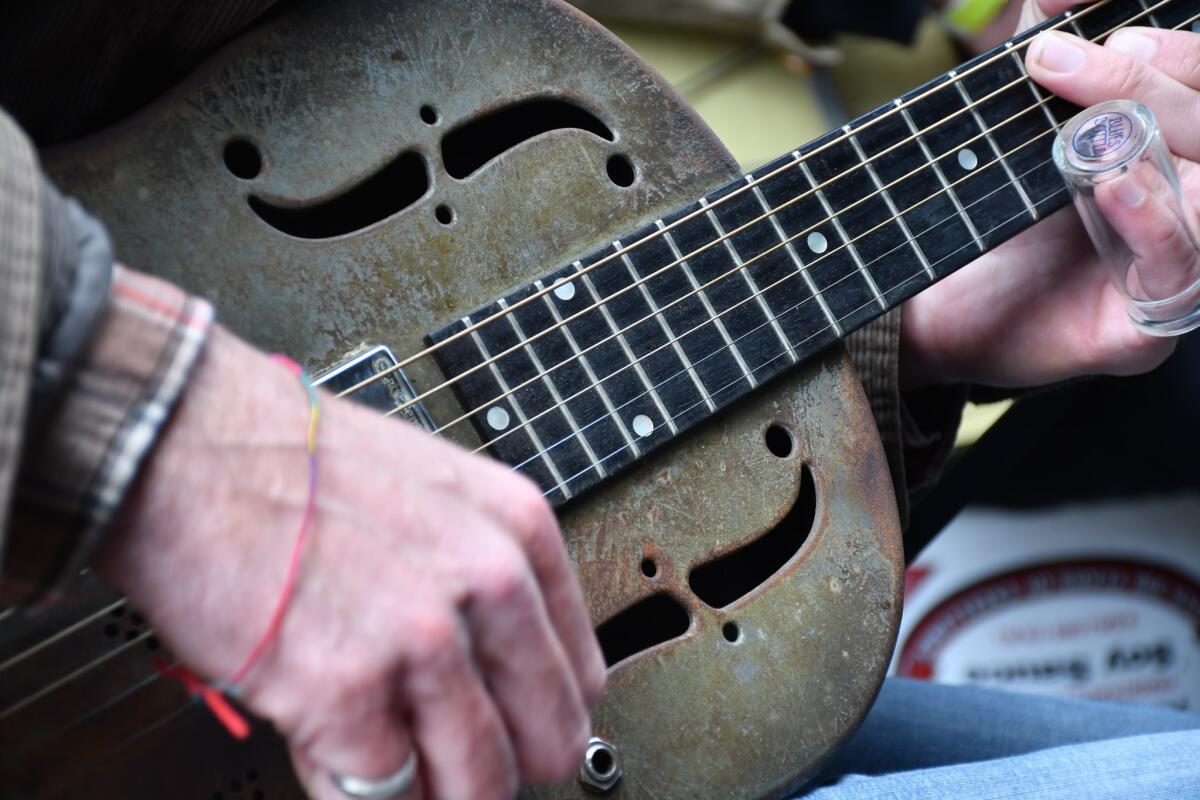
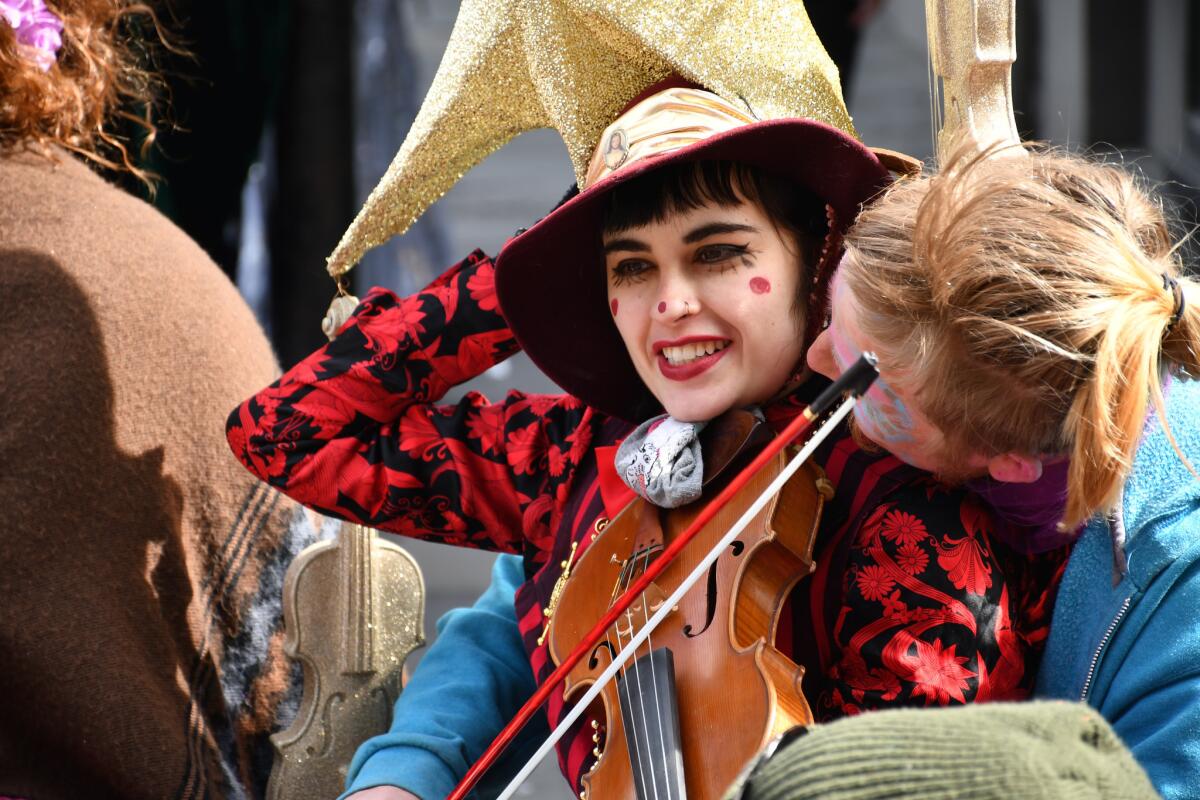
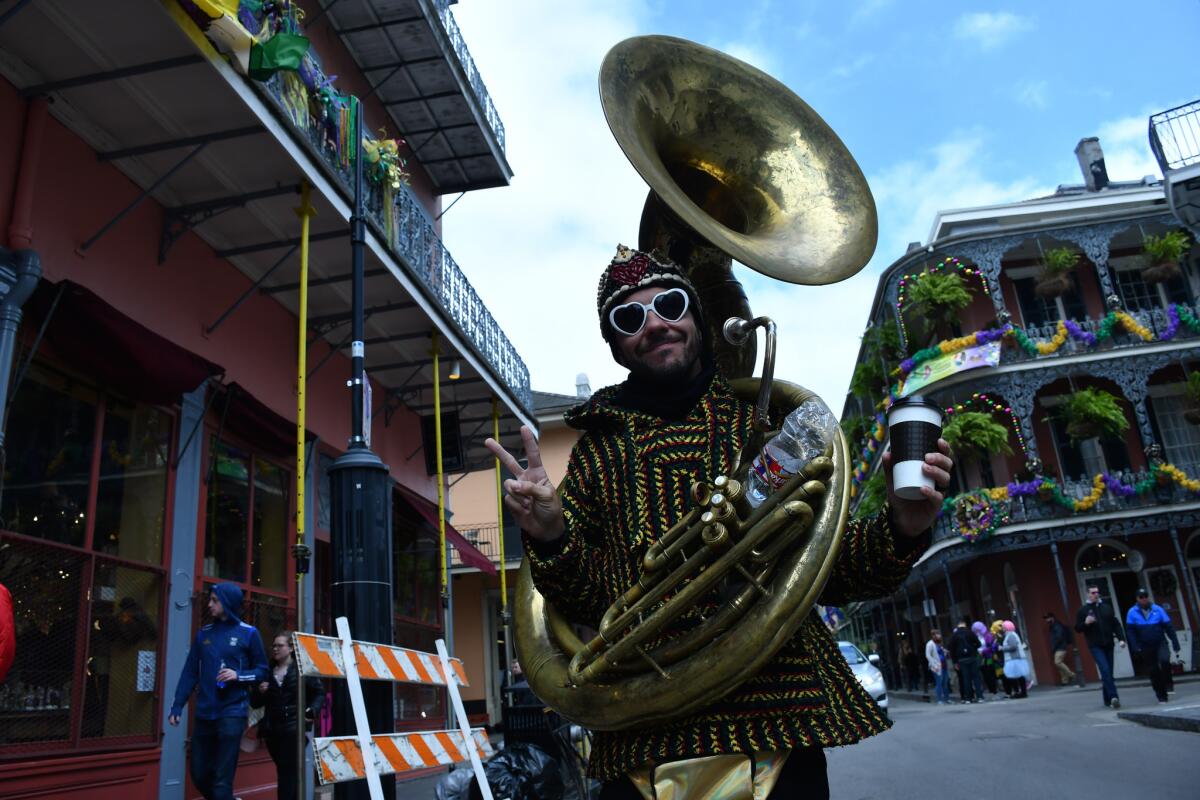
But finding Ketchens was harder. She and her band typically play on weekend afternoons and evenings, but Mardi Gras week does strange things to everyone’s schedule.
First day, no Ketchens. Second day, no Ketchens.
Fortunately, there was still plenty to hear.
Sonic riot and bonus baggie
I mostly gravitated toward traditional jazz players. Whenever I stayed for longer than one song, I tipped at least $1, sometimes $5, a couple of times $10.
These musicians follow rules that are largely unwritten. After decades of skirmishing over who can do what in the street and when, the city has imposed limits on volume but requires no permits and sets few time limits.
On my third day, wandering near Royal and Frenchmen, I got caught in a sonic riot called Mission Delirium — a San Francisco brass band on a working holiday in New Orleans. Eighteen musicians playing to win.
By the time I arrived, they were well into their set. Widespread dancing. One horn player was rolling around on the pavement while another crawled through shrubs. The four percussionists, as lively as Energizer Bunnies, cavorted and collided.
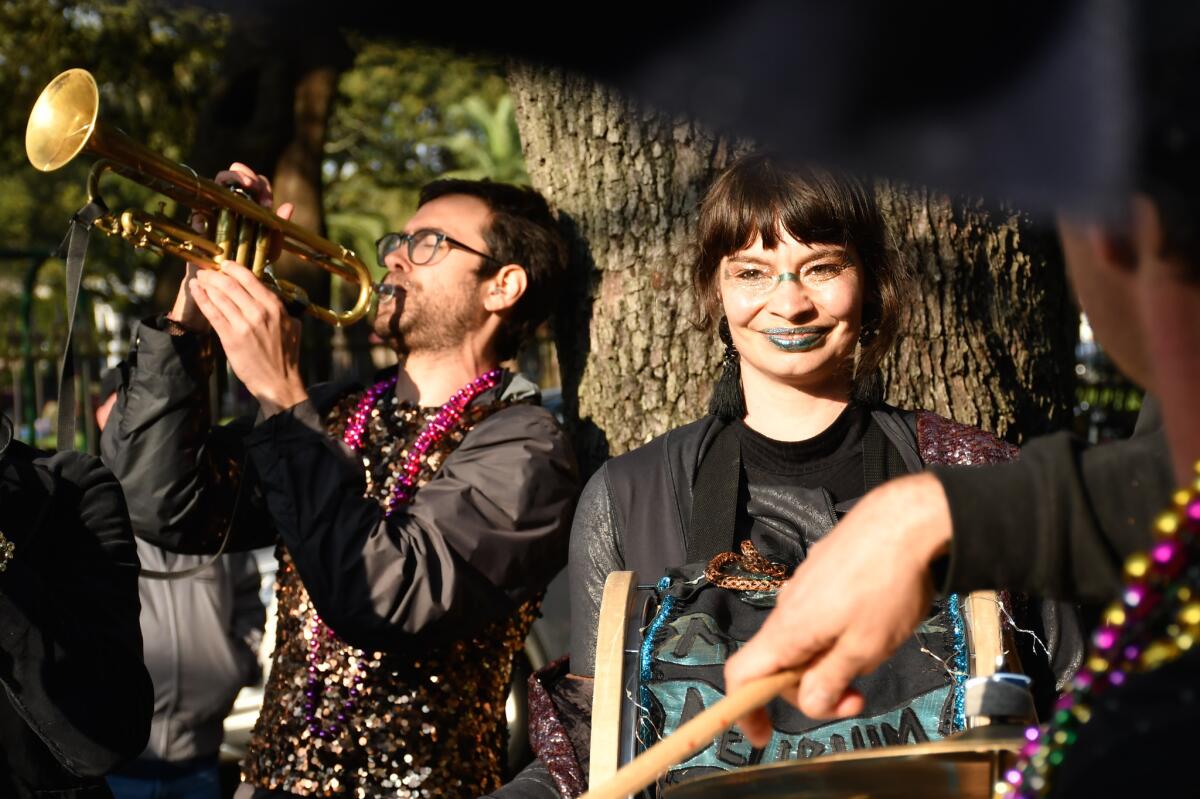
I didn’t recognize the tunes, but their chops and showmanship won me over. Who knew you could play a reed instrument while doing the limbo? Who knew a triangle player could swing?
“There’s something different about the way music is received” in New Orleans, said baritone sax player Nick Rous of San Francisco.
Their set would have been enough to make my day. But minutes later, in the French Quarter, a gaggle of jazz players launched into “Sweet Georgia Brown.”
By the time they moved on to “Darktown Strutters’ Ball,” they had gathered a crowd of 30 or more, including a bicyclist who paused to hand them bananas.
“We’re the St. Peter’s Orchestra,” one horn player announced. I guessed that they were seasoned band mates, judging by how the five members traded solos and moved from tune to tune. But, no, this lineup had been assembled on the fly, and none of them was raised in Louisiana.
Aeryk Parker, the front man on vocals and sax, had been splitting time between New Orleans and Denver. Former Angeleno Smitti Supab, on stand-up bass, had been in town for six years. Lamar Anderson Clark, another former Angeleno who arrived four years ago, was playing rhythm guitar.
Nathaniel Ruiz, on tenor sax, came from Illinois. Blanche Méthé, who sat in on trumpet, had arrived three weeks before from Montreal.
As the crowd dispersed, the players huddled to count the take — more than $200 and a bag of weed.
“There’s no club owner telling me what to play. I’m getting paid to have fun and learn,” Supab said.
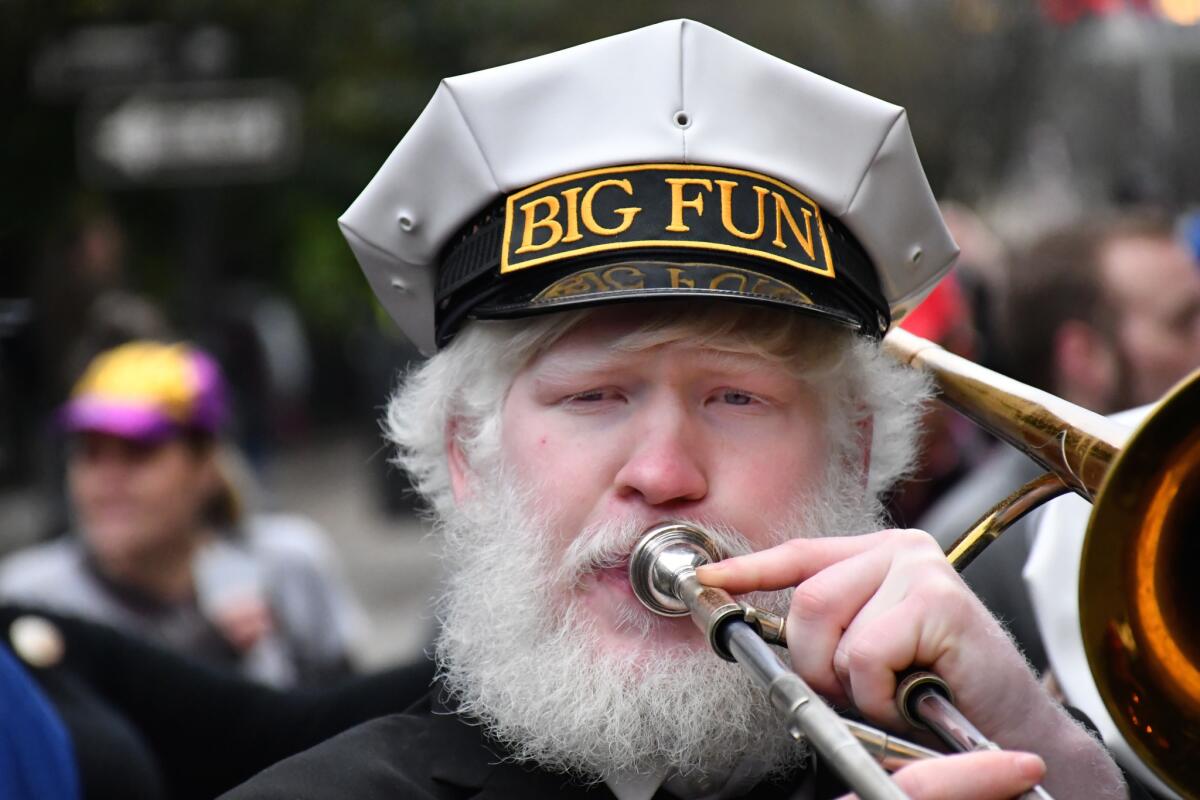
The downsides, Méthé said, are that you never know if a spot will be open, tips will be rotten if it rains, “and sometimes you have all brass players and no rhythm section.”
That same day, I stopped by the New Orleans Jazz National Historical Park’s office on North Peters Street, where interpretive ranger Jon Beebe was giving a talk on the roots of jazz and local traditions of competition and mentorship.
Buddy Bolden, Tanya Huang and Tuba Skinny
You probably know about Louis Armstrong, Beebe told a group of mostly foreign tourists, but Armstrong built on the innovations of King Oliver. And Oliver built on the innovations of Buddy Bolden.
Bolden, a cornet player, pioneered improvisation while marching and playing French Quarter clubs in the first years of the 20th century. He died penniless in an asylum and there are no known recordings of him, leaving jazz hounds to wander the neighborhood and imagine his echoes.
In Bolden’s time, Beebe said, “there used to be bands almost on every street corner.” It was “the proving ground before you could be able to play on the riverboats.”
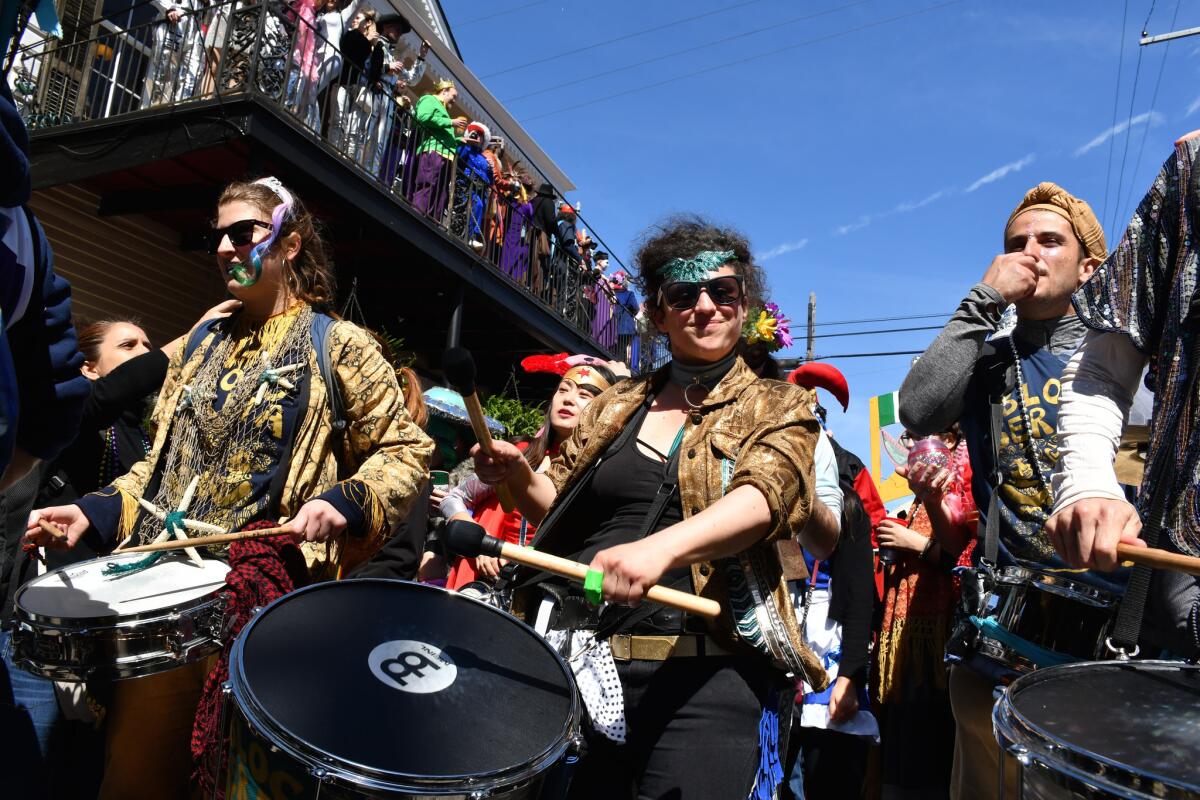
In recent years, Beebe said, one of the most popular acts on the street was a duo, Tanya Huang, a violinist born in Taiwan, and Dorise Blackmon, a guitarist from New Orleans. They split in 2017, but Huang is still a regular at the corner of Royal and St. Louis streets.
Then there’s Tuba Skinny, an eight-member group that focuses on traditional jazz, ragtime and Depression-era blues. (The name is a nod to local musician Tuba Fats, who died in 2004.) They’ve been playing Royal Street and local clubs since 2009.
But at the top of list, Beebe said, is Ketchens. “She’s technically amazing. And she has more songs memorized than I’ll ever learn.”
I sighed and bought one of her CDs at the Louisiana Music Factory on Frenchmen Street.
Last chance, long note, guest solo
By my last day in town, I’d inspected Armstrong’s first cornet at the New Orleans Jazz Museum, sampled gumbo at half a dozen restaurants and watched the fast fingers of “Plink” Floyd, Wednesday night banjo player at Cafe Beignet.
I’d heard the Royal Street Winding Boys at the Spotted Cat. I’d caught the hour-long traditional jazz show in Preservation Hall.
There was time for just one more walk on Royal. I’d barely begun when an arresting sound cut through the street noise.
A clarinet playing “Summertime” in front of Rouses Market.
I edged through the knot of people so I could see a tiny, smiling African American woman seated in a lawn chair. Fur hat, box of CDs at her side. She was Doreen Ketchens, joined by her husband, Lawrence, on tuba, a trombone player, guitarist, drummer and a semicircle of six buckets, all rapidly filling with bills.
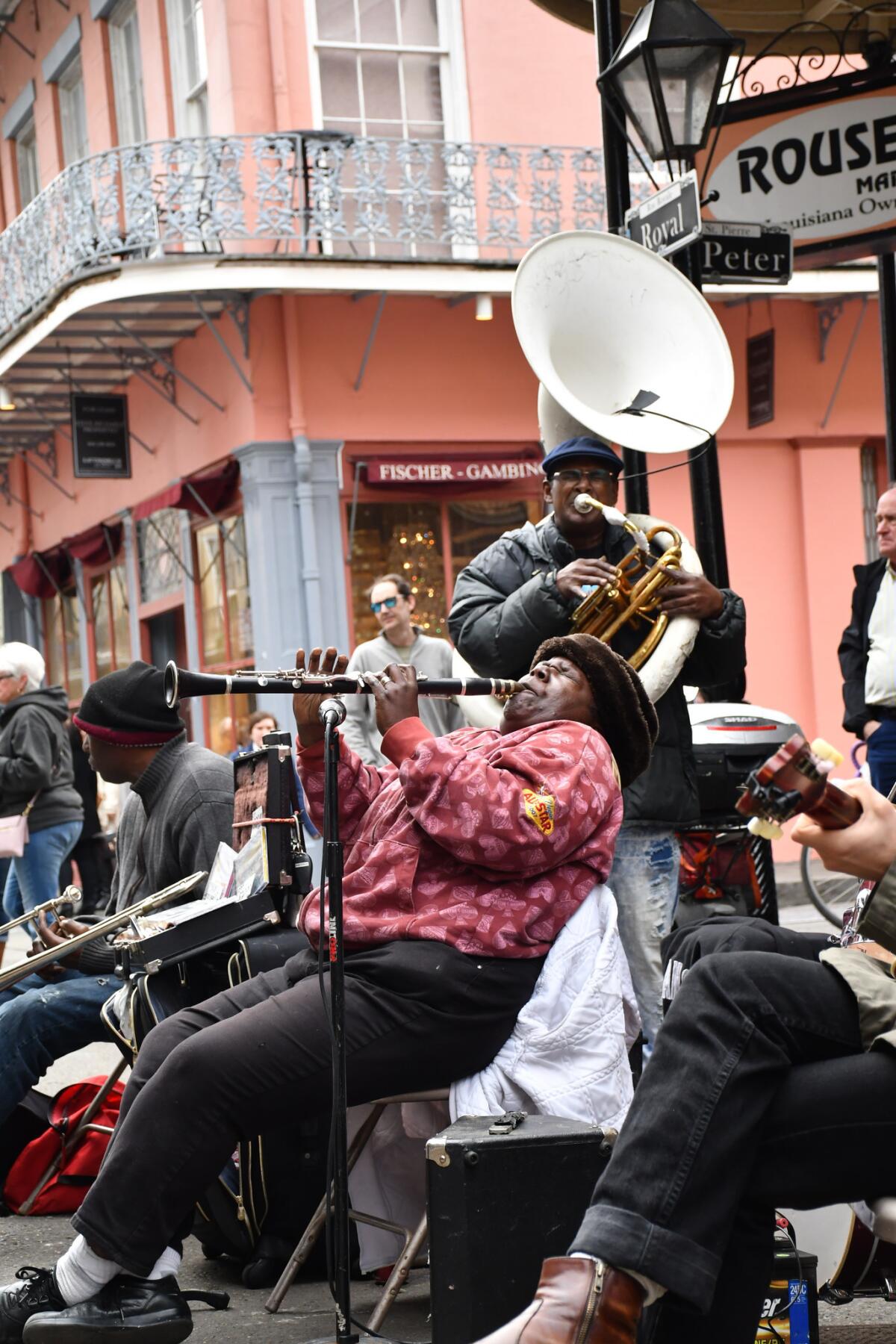
Ketchens, raised in the city’s Treme neighborhood and classically trained, has toured the world, played for four U.S. presidents and released about two dozen CDs. Last year she played “Just a Closer Walk With Thee” with the Louisiana Philharmonic. She’s also admired as an educator.
Until I saw her on the street, I didn’t realize she also sings, and she does it well. But the clarinet solos — they’re in another category.
When the moment arrived, she grabbed her clarinet, furrowed her brow and leaned back and blew. If her eyes had been open, she’d have seen the third-floor wrought-iron railings of the 1830s LaBranche House across the street.
At first I was surprised by how many notes Ketchens could fit into a measure — loud, clean, fleeting notes that knew exactly where they were going. Then she hit a high note and held it, measure after measure, until I couldn’t hold my breath anymore.
Later, when I asked her how she ended up playing Royal Street, she said, “I fell in love with a tuba player. … I can only say so much. But I never was a club person. I never was a night person.”
MORE: Music places around the U.S. »
Playing on the street, she said, “we had our bouts with the police where we lost at first. And then we won.” Now, she said, “there’s a level of respect that’s working.”
As for her fellow performers, “there’s a lot of people coming here from other places … and they play good music too.”
About halfway through her set, Ketchens noticed a tall, slender horn player perched on his instrument case.
“What you sittin’ on?” she called out to him. “Want to join us?”
He was Aeryk Parker, the sax player I’d met the day before. He’d never been invited to play with Ketchens. He pulled out his horn, told her his name was Parker and joined her on “Royal Garden Blues.”
They raced through it, traded solos and united for a snappy finish.
“A hand for Parker, y’all!” hollered Ketchens.
The applause rang up and down the block.
“Incredible,” said Parker later, looking at the queen of Royal Street. “Something to aspire to.”
If you go
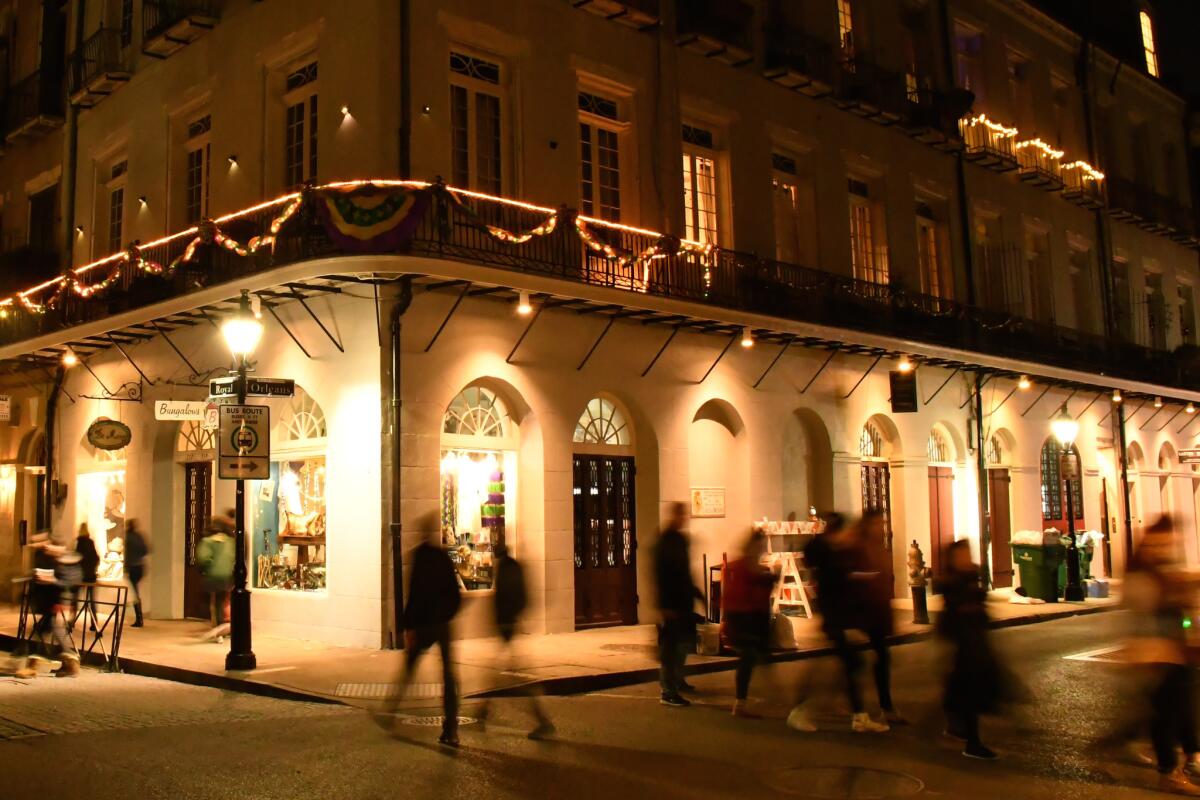
THE BEST WAY TO NEW ORLEANS
From LAX, Delta, American and Southwest offer nonstop service to New Orleans; Southwest offers direct service (stop, no change of planes); and American, Southwest, United and Delta offer connecting service (change of planes). Restricted round-trip service from $256, including taxes and fees.
WHEN TO GO
Three music-intensive events to pursue or avoid, depending on how you feel about crowds: the French Quarter Festival (April 11-14), the New Orleans Jazz & Heritage Festival (April 25-May 5) and Mardi Gras (Feb. 25, 2020).
WHERE TO STAY
Eliza Jane, 315 Magazine St., New Orleans; (504) 882-1234. Part of the Hyatt’s Unbound collection; two blocks from the French Quarter. Doubles from $225.
International House, 221 Camp St., New Orleans; (504) 553-9550. Doubles from $134. Chic, modern, two blocks from the French Quarter.
Cornstalk Hotel, 915 Royal St., New Orleans; (504) 523-1515. More history and less luxury. Fourteen rooms in an 1840s French Quarter house. Doubles from $214.
WHERE TO EAT
Café Amelie, 912 Royal St., New Orleans; (504) 412-8965. Most dinner entrees $21-$29.
Curio, 301 Royal St., New Orleans; (504) 717-4198. Most dinner entrees $14-$30.
Marigny Brasserie, 640 Frenchmen St., New Orleans. Most dinner entrees $14-$22.
WHERE TO LISTEN AND LEARN
Preservation Hall, 726 St. Peter St., New Orleans; (504) 522-2841. Fiver 45-minutelong traditional jazz shows nightly between 5 p.m. and 10 p.m. All ages. Tickets $20-$50. Most tickets are general admission at the door (cash only), requiring a wait of 30 minutes or more before the show. No alcohol sold inside.
Spotted Cat, 623 Frenchmen St., New Orleans. Jazz nightly, different acts at 2, 6 and 10 p.m. Cash only; 21 and older.
Louisiana Music Factory, 421 Frenchmen St., New Orleans; (504) 586-1094. CDs, vinyl, sheet music and other merch.
New Orleans Jazz Museum, 400 Esplanade Ave., New Orleans; (504) 568-6993. Admission $6, plus tax, for adults.
New Orleans Jazz National Historical Park, 916 N. Peters St., New Orleans; (504) 589-4841
TO LEARN MORE
Produced by Denise Florez.
Follow Reynolds on Twitter: @MrCSReynolds
Sign up for The Wild
We’ll help you find the best places to hike, bike and run, as well as the perfect silent spots for meditation and yoga.
You may occasionally receive promotional content from the Los Angeles Times.




